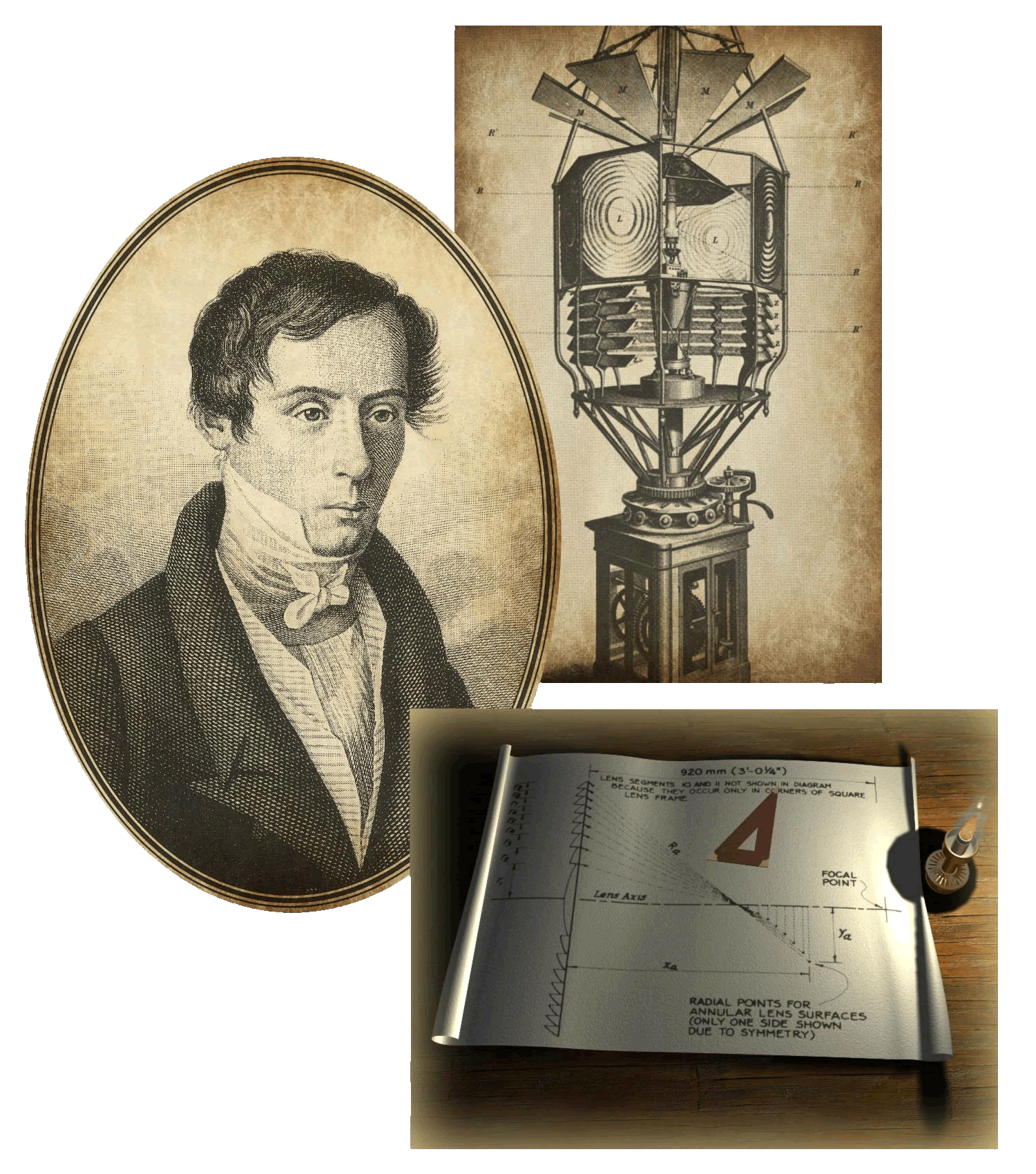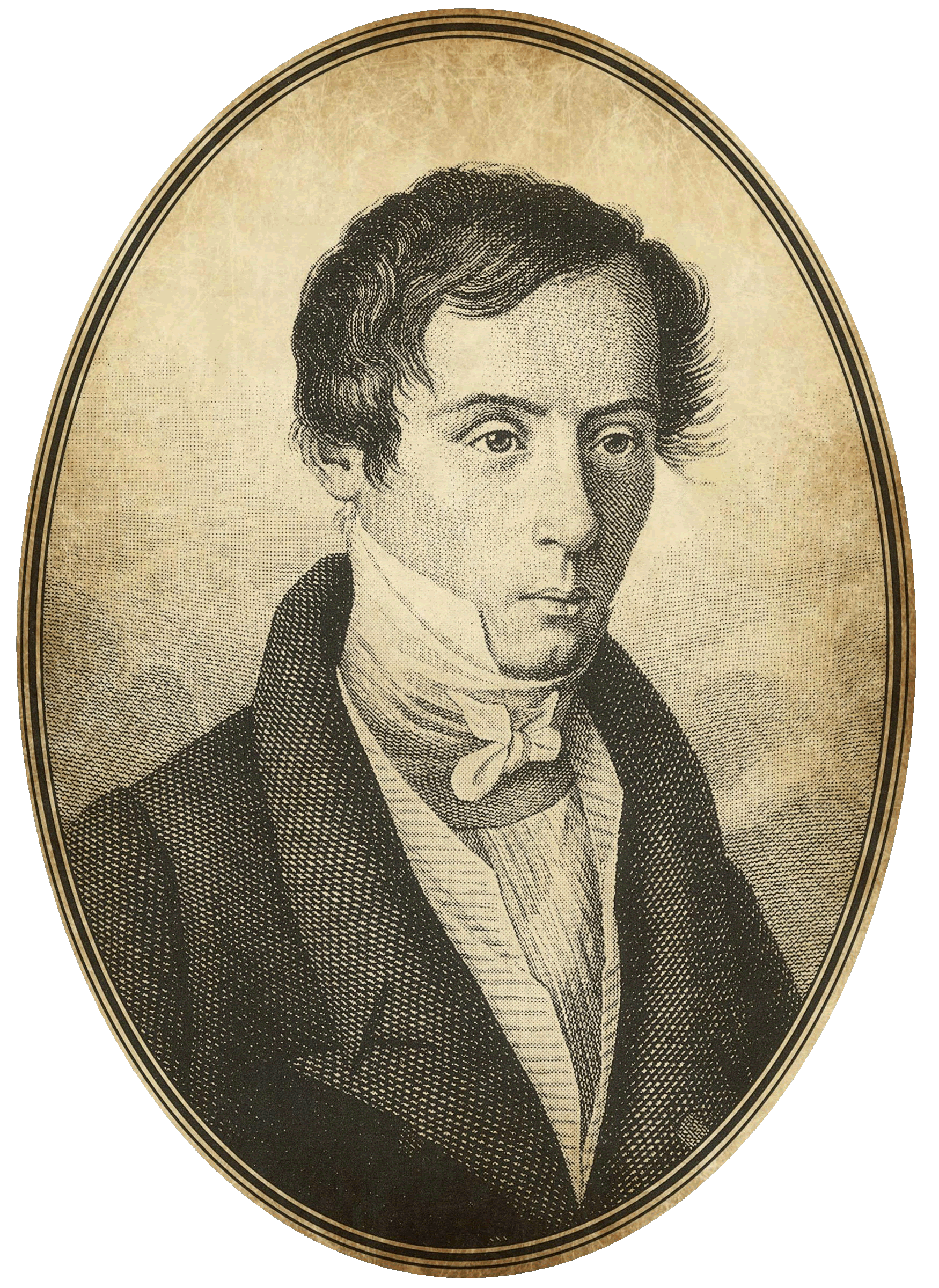
Artworks Florida
Classic Fresnel Lenses, LLC
AUGUSTIN FRESNEL AND HIS LENS DESIGN
Augustin Fresnel, a French physicist, invented a lens in 1819 that would revolutionize lighthouse illumination worldwide. The first lens installed at Cordouan Lighthouse in 1823 consisted of eight panels of annular lenses placed around the lamp at a focal distance of 920 mm. To collect the light that would otherwise escape above the lenses, Fresnel placed a series of plane silvered mirrors on which the light was thrown by another system of lenses. Before electricity, these massive lenses were rotated by a clockwork mechanism similar to the concept of a grandfather clock. A weight would drop down the center shaft of the lighthouse attached to a cable, which was wound around a drum. The drum was linked to a series of gears. The ratio of the gears was designed to allow the weight to drop at a certain speed. A pinion gear from the clockwork would interface with a large ring gear attached to the pedestal and rotate the lens.

Augustin Fresnel
( 1788 - 1827 )


Lamplight collected by the Fresnel Lens
This section view of a Fresnel lens shows how light is collected from a single oil lamp placed in the center of the lens. The lamp radiates light in all directions. The prisms are positioned to collect all light directed toward them, not allowing any light to escape. The areas shown in red are intentionally left open. The area at the top of the lens is reserved for exhausting the lamp. The area toward the floor is blocked by the shadow cast by the base of the oil lamp.

Bending of the Light
This standard cross section of a Fresnel lens shows how the light is refracted and reflected through the lens. All the light rays exit the lens horizontal, directing them seaward.
Types of Prisms
The Fresnel lens contains two basic prism designs. The area near the center is referred to as the lens section. The technical term is "dioptric", which means the light is bent or refracted twice. Once as it enters the glass and again as it exits. Above and below this section, a different style prism was designed, to use refraction and reflection to direct the light. These prisms are called reflecting or "catadioptric" prisms. The light is refracted as it enters the prism, reflected off the second face, and refracted as it exits. These prisms were necessary because the angle of light from the lamp was too steep to direct the light seaward using simple refraction.

Types of Lenses
There are two basic types of Fresnel lenses. Fixed, producing a steady glow, and Rotating, producing a flash as the lens rotates in an observer's line of sight. Each have the same cross section. The Fixed lens have prisms generated around a vertical axis forming belt lenses. The Rotating lens have prisms generated around a horizontal axis forming bullseye lenses. The Fixed/Flashing lens is a combination of the two, producing a steady glow varied by flashes.
Fresnel Lens Animation
This animation demonstrates how light is refracted and reflected through a typical Fresnel lens section The red line represents a beam of light radiating out from the light source. The Fresnel lens collects the light from every angle and bends it to exit horizontal, sending it seaward.
